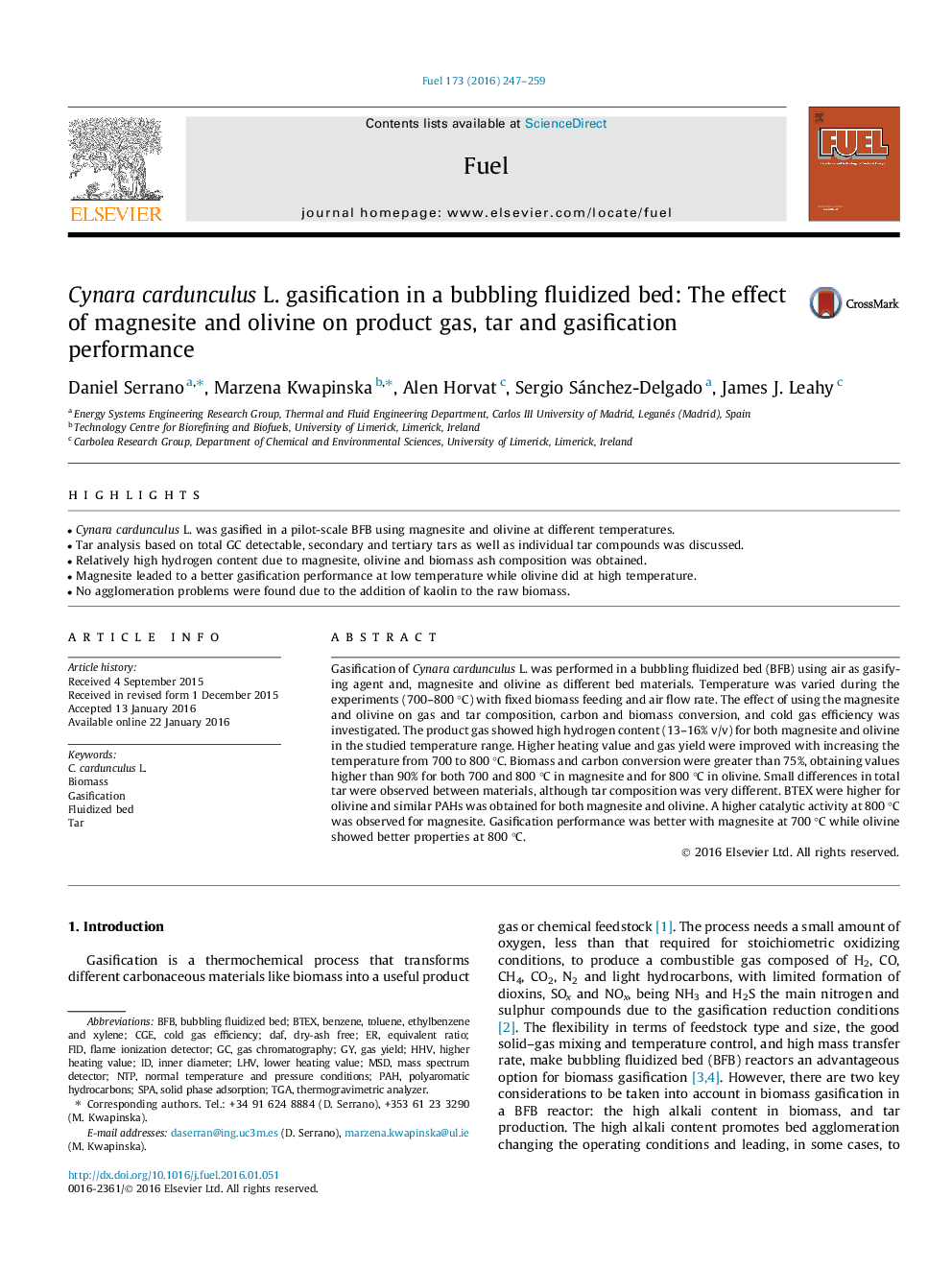| Article ID | Journal | Published Year | Pages | File Type |
|---|---|---|---|---|
| 205244 | Fuel | 2016 | 13 Pages |
•Cynara cardunculus L. was gasified in a pilot-scale BFB using magnesite and olivine at different temperatures.•Tar analysis based on total GC detectable, secondary and tertiary tars as well as individual tar compounds was discussed.•Relatively high hydrogen content due to magnesite, olivine and biomass ash composition was obtained.•Magnesite leaded to a better gasification performance at low temperature while olivine did at high temperature.•No agglomeration problems were found due to the addition of kaolin to the raw biomass.
Gasification of Cynara cardunculus L. was performed in a bubbling fluidized bed (BFB) using air as gasifying agent and, magnesite and olivine as different bed materials. Temperature was varied during the experiments (700–800 °C) with fixed biomass feeding and air flow rate. The effect of using the magnesite and olivine on gas and tar composition, carbon and biomass conversion, and cold gas efficiency was investigated. The product gas showed high hydrogen content (13–16% v/v) for both magnesite and olivine in the studied temperature range. Higher heating value and gas yield were improved with increasing the temperature from 700 to 800 °C. Biomass and carbon conversion were greater than 75%, obtaining values higher than 90% for both 700 and 800 °C in magnesite and for 800 °C in olivine. Small differences in total tar were observed between materials, although tar composition was very different. BTEX were higher for olivine and similar PAHs was obtained for both magnesite and olivine. A higher catalytic activity at 800 °C was observed for magnesite. Gasification performance was better with magnesite at 700 °C while olivine showed better properties at 800 °C.
